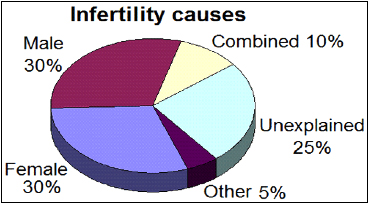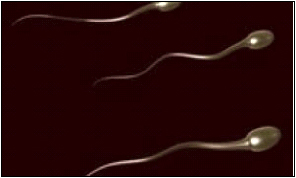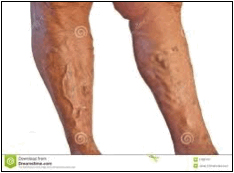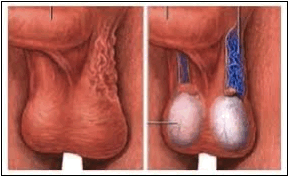Male Infertility from Varicocele (Part One)
INTRODUCTION
Before we discuss infertility, I think it's important to clarify what is meant by the term infertility. Infertility can relate to both males and females. Often, the terms infertility and sterility are used interchangeably, which is not accurate. Anglo-Saxon authors do not differentiate between them. Sterility is the biological inability of a man or woman to achieve pregnancy.
Infertility, in fact, is the inability of a woman to complete the birth of a child, that is, to carry a pregnancy to term. A couple is considered sterile (infertile for Anglo-Saxon authors), when they have not achieved a pregnancy even after one year of unprotected sexual intercourse, or for women after the age of 34. A normal couple, about 25 years old, with regular sexual intercourse, has a high chance of conceiving a pregnancy in any given month.
Many men may have been sterile for a long time without being aware of this fact, which they only realize after marriage. Sterility can be primary and secondary. Primary sterility is considered in those individuals, who have never managed to achieve a pregnancy. Sterility is considered secondary when it becomes impossible to realize a second pregnancy, although a first pregnancy was successfully achieved. Male or female sterility has many causes. The approximate percentages of causes are shown in the table below.

CAUSES OF STERILITY IN %.
The causes of male sterility are numerous, such as poorly treated inflammations of the genitourinary tracts, prostate pathologies, past traumas, genetic chromosome pathologies, treatments with chemotherapy, radiotherapy, abuses with alcoholic drinks, tobacco, and drugs, etc. A patient with such a disorder should seek a uro-andrological consultation as soon as possible. The patient's medical history helps a lot in determining the possible causes of sterility. Even though less so than in females, in males after the age of 30 - 35 years, the level of testosterone decreases and a condition of oligospermia occurs.
The purpose of this publication is not the analysis of all causes that can lead to sterility, but to highlight one of the causes, unfortunately not rare, which can be prevented from an early age, or even successfully treated, when it has not yet caused irreversible changes.
So today we will talk about VARICOCELE.
Varicocele affects about 15% of boys from the age of 15 to 25 years. Varicocele, in about 90% of cases, is located on the left side, 8% on both sides, and 2% only on the right. Varicocele very rarely appears in adulthood (secondary form). The etiology of varicocele is still not precisely determined. Based on the theories accepted so far, we can say that the mechanism is multifactorial. It remains to accept that there is a statistically acceptable correlation between varicocele and decreased reproductive capacity. This makes us insist on an early diagnosis, to take measures for therapy as soon as possible, to prevent or limit further damage.
In medical science, there is a lot of talk about prevention, or rather, early diagnosis and, in fact, very little is done for male-born children to diagnose a simple pathology in time, that could make them sterile in adulthood, perhaps because it involves intimate organs, or because they do not have a confidential relationship with their father. Also, male children are not sent to consult any urologist, perhaps because the idea has been created that the urologist is considered "as a doctor for older men"!
Meanwhile, female-born children, future girls, are carefully followed by mothers as well as institutions (HPV vaccination, monitoring of menstrual cycle, etc.).

Anatomical form of normal spermatozoa.
Of course, you have seen and heard about the expansion of leg veins in people of both sexes. Scrotal varicocele is a disease only of males, where the expansion of veins does not occur in the leg area, but in the scrotum. The mechanism is the same, the location is different.

VARICOSE VEIN OF THE LOWER LIMBS.
We need to make known that, there is also pelvic varicocele in females. Many women complain about lower abdominal pain, during the menstrual cycle or from sexual intercourse. These disorders are often neglected, but they are caused by a defined pathology as female pelvic varicocele. It involves the varicose expansion of ovarian veins, forming precisely a varicose vein around the ovaries. This type of pathology is not followed by female sterility.
Male varicocele is an expansion of veins around the testicles, caused by the malfunctioning of the valves of the internal spermatic vein. In the case of varicocele, the small valves inside the spermatic vein are malfunctioning (not performing their function) and venous blood, instead of going up, towards the heart as usual, it turns back, towards the testis, causing the expansion of the scrotum veins (spermatic pampiniform plexus).
The expansion of veins around the testicles results in raising the local temperature above 32 degrees Celsius, which should be the normal temperature for this area and, as a result, influences the ability of the testicles to produce a smaller number of spermatozoa as well as with poorer mobility, resulting in male sterility. If the diagnosis of varicocele is made when the damages are smaller, in most cases, healing without consequences is possible. If the recognition of this pathology is delayed and not treated in time, the chances of healing are significantly limited.

LEFT SIDE VARICOCELE, VISIBLE FROM SIMPLE INSPECTION. (Grade three).
A very informative and extremely valuable article. Thank you for this!!!
Look, I am 17 years old and have been diagnosed with Varicocele. I did a spermogram analysis at a private laboratory and it turned out that I had (azoospermia), meaning a total absence of sperm.
I highly doubt that the analysis was done correctly since the sample stayed on the lab counter for more than 15 minutes before the doctor arrived. (Most labs claim they do this analysis) Anyway, my question is if this analysis is accurate and I do have (azoospermia), does that mean I have no hope of starting a family in the future or not???
I would really appreciate it if you could give me an answer
Sent by Klodian miko, më 26 April 2017 në 17:06